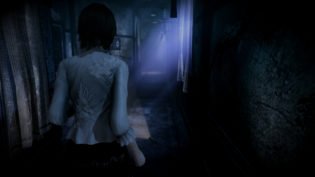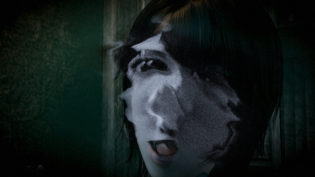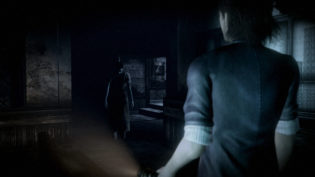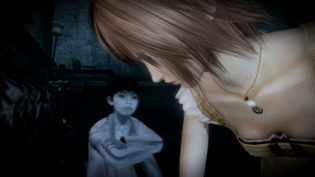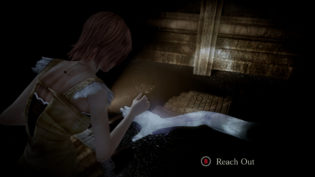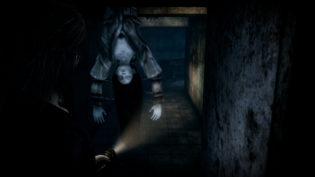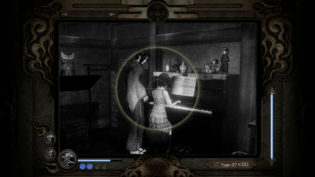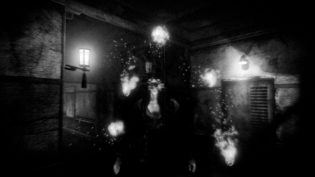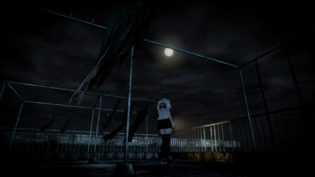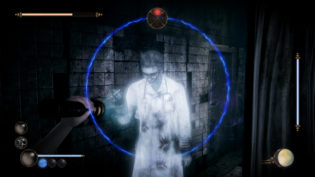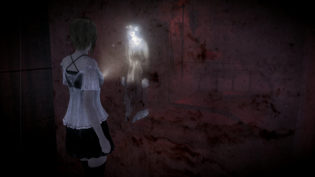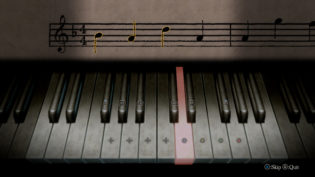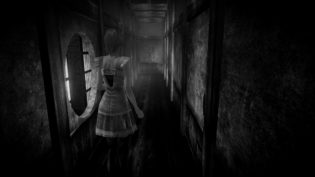I have to say, it really is very weird to be going backwards with these Fatal Frame remasters (but I do hope we don’t stop here). Couple of years ago the currently latest entry, Maiden of Black Water, got released on PC and modern consoles and many people experienced the franchise for the first time. And while it is arguably among the weaker entries, with many poor design choices and annoying elements, it nonetheless had some of the coolest ideas for mechanics that were unique for it and not tried in the series before. Still, I went into Mask of the Lunar Eclipse with relatively high expectations and was not disappointed.
Fatal Frame: Mask of the Lunar Eclipse was originally released in 2008 for Wii, only in Japan and apart from a fan translation, this new release is the first time the game is officially translated into English (the voice acting remains Japanese). It is the fourth entry in the action adventure horror franchise about fighting ghosts with occult photo cameras and by this point the series, that have started with more leaning into classic survival horror pillars, have moved to be more linear and story/atmosphere driven. However, unlike what would happen in Maiden, the linearity of the game is often less of a problem due to the traditional “haunted house” choice for locations and lack of a generic starting point for each chapter. So while you will encounter plenty of doors that are closed “because story”, most of the ones you can encounter you do unlock in later chapters after finding keys or solving puzzles, instead of the game just allowing you to go in a certain direction after a certain point.
The basics of the franchise are mostly consistent – you control one of several characters (this game continued the idea from the third entry of having multiple playable characters with their own equipment) as you explore a part of the location that is accessible in the chapter of the story. You search for items, read lore items and most importantly – encounter ghosts, some of whom are passive and give you points when you take a picture of them and some are aggressive and you have to fight them (though in rare occasions you can ignore some fights). As you aim with your camera you switch to the first person perspective and using the helpful UI and different camera abilities that can be upgraded, fight the ghosts with a variety of types of shots, films and lenses. You can aim and walk, though it’s relatively slow, and you can lock onto a ghost to keep them in frame. But unlike Maiden (that was designed for the Wii U controller) there are no additional tricks to the framing of the shot – it’s always a horizontal frame and ghosts don’t have any flying particles you need to hit.
It’s quite simple and most of the game, as is the case for the franchise in general, holds purely on the creepy and unsettling atmosphere it creates from the start. Even when technologically outdated, these games look stylish, with Mask of Lunar Eclipse being no exception. And the way the game handles camera during moments when players have limited control over it is, as always, very cinematic and also spooky, as you might get a strange wide shot when opening a door with lots of corners where you expect something to be. And sometimes there is something. And while these games are not above jumpscares, they tend to prefer sudden things to not scream at you, just suddenly be there, watching.
Controls-wise, it was nice to go back from Maiden to something a bit closer to the classic Fatal Frame games. You still have a one-button run, when you only need to turn the character as they run forward – a staple for the series. And unlike Maiden it’s mostly responsive and feels good. In general, the game feels both slow in terms of animations, but not too slow where it’s just sluggish and annoying (another thing Maiden was). This is the game that also introduced the grabby ghost hands when you try to pick up items, but on Normal these are very uncommon and feel far more fair than what they would become in Maiden.
That said, there’s some annoying stuff about the basics. For example, you usually first need to “notice” a potential item so it starts glowing and you can pick it up and to do that, you need to look at it with a flashlight. Given that I have not played it on the Wii originally, I don’t know if it was frustrating, but it certainly is often frustrating now when this is done with the right stick. You sometimes need to find an exact precise pixel for the item to become available and after that you perform yet another dance before the interaction prompt can appear. Tracking for successful shots in combat or with bonus passive ghosts can also feel extremely off, when you see that you’re clearly hitting the enemy in the freeze frame of a shot, but it doesn’t count. It doesn’t happen too often, but enough to dread some ghost encounters.
What I was pleasantly surprised by was the story. It’s still rooted in fictionalized rituals and traditions based on real elements of Japanese folklore, but this time around it also had a good psychological and scientific angle to some aspects of it. And it didn’t try to be edgy for the sake of being edgy, something both Fatal Frame III and Maiden suffered from. Given that music plays an important role in the story, I was also glad that the soundtrack was really good. It’s mostly a mood thing, but there are some really memorable tunes and the whole ending section of the game felt great just due to the music. Oh and speaking of that – the puzzle involving the music was adapted to traditional controls, instead of using a Wiimote and seems far less frustrating.
Fatal Frame: Mask of the Lunar Eclipse is probably not the best example of the franchise and it does have some frustrating elements. But at the same time, it is a really good way to get aquatinted with the franchise (and most certainly a better one than playing Maiden) and see what’s all the fuss is about. It would still be wonderful to see the first 3 games remastered as well, but it’s great to see Mask of the Lunar Eclipse finally available for the masses. And especially great seeing that it really is pretty cool.


